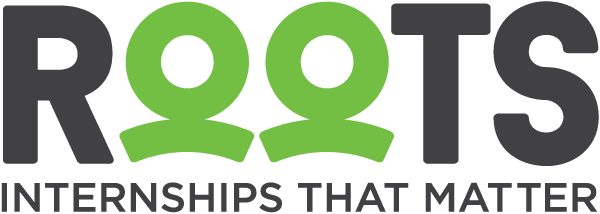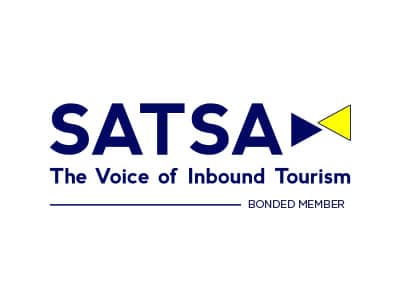So you’ve completed a nonprofit internship abroad and are ready to hit the job market. You’ve learned new skills, experienced more, and achieved incredible things, but how can you start showcasing skills on resumes? It’s time to learn how to put an internship on your resume.
One of the best reasons to do an NGO internship is for the boost it gives your CV. You’ll have so many new soft skills, hard skills, employable traits, and experiences to brag about to employers, but you need to find the right way to do it. To do this, you’ll need some internship resume tips.
In this blog, we’ll tell you everything you need to know about how to add internships to your resume. We’ll answer key questions like where to put an internship on a resume, what information to include, and offer some of our top resume optimization techniques.

6 Steps for adding an internship to your resume
1. Gather Information During Your Internship
If you’re reading this blog, you’ve likely already completed your internship. However, one of our top internship resume tips pertains to the internship itself: Keep track of everything!
It’s easy to think during your internship that you’ll remember what you’ll need to rewrite your CV later, then forget crucial details once you finish. Our advice: keep a notebook or a document on your laptop and make time to track what you do each week of your internship.
This information-gathering is a foundational part of how to add an internship to your resume accurately. As a bonus, it will also help solidify the skills and knowledge you’ve gained. So it helps with two of the ways a nonprofit internship can boost your career.
The key things you should keep track of are:
- Hard skills – Abilities or knowledge gained from your internship, such as data analysis, grant writing, or technical proficiencies.
- Soft skills – Non-technical skills and traits that aid effective collaboration. Things like creativity, communication, teamwork, problem-solving, and emotional intelligence.
- Procedures learned/practiced – Specific tasks you completed during your internship and the methods and procedures you used to complete them.
- Tools used – Instruments, software, or platforms used for tasks like project management, communication, data analytics, and fundraising.
- Achievements – Specific accomplishments or milestones attained by an intern, contributing to the organization’s goals.
- Impact Made – This is a bonus you can add if yours was a nonprofit internship. The impact made or measurable results of an intern’s contributions or overall nonprofit activities, like the completion of successful projects or the amount of funds raised.
2. Choose the Right Resume Format
Choosing the right format for your CV is pivotal when adding an internship to your resume. You need to find out how to add internships to your resume in a way that allows you to effectively highlight the skills and experience gained.
Your goal should be to make your CV as information-dense yet as easily digestible as possible. While it can be useful to include subsections listing things such as soft skills, passions, and hobbies, be sure to only include relevant information. Don’t go overboard.
Regarding how to list an internship on a resume, there are two main types of formats you want to consider:
- Chronological formatting. – presenting your work experiences in reverse chronological order. This is ideal if your host organization or role holds significant relevance to the position you’re applying for.
- Functional formatting. – Emphasizes skills and accomplishments over a strict timeline. It is most suitable if you want to highlight specific competencies gained during the internship.
3. Write a Header
A clear header for the internship section of your resume with all the right information is probably the simplest part of how to add an internship to your resume. It doesn’t need to be complicated, but it should be uniform across all job listings on your CV. So it’s worth thinking about.
Your header simply needs to state the name of the company, your specific internship position, and the duration of your involvement. It should also feature prominently in the entry for your internship on your resume. Placing this information at the top of each entry is best, as it lets readers quickly grasp the key details.

4. Write a Strong Job Description
If you want to know how to put an internship on your resume the right way, learn to write a strong job description.
When adding an internship to your resume, you want to provide a detailed yet concise job description that outlines what your responsibilities were during the internship. To provide a clear picture of your internship without wasting words, try using action verbs to articulate your achievements and daily tasks.
Whenever possible, quantify your accomplishments to add specificity and impact. This step helps employers gain a good understanding of your capabilities and the value you bring to an organization. It’s also one of many key resume optimization techniques.
5. Highlight Achievements and Skills
Your focus should always be showcasing skills on your resume. Here’s how to add internships to your resume in the best way possible.
Under your job description, include a bullet-point list where you highlight any recognition or awards received, specific software proficiency gained, or any unique experiences that set you apart. You can also mention any lessons learned or key internship takeaways relevant to the position you’re applying to.
If you completed a nonprofit internship, here is your opportunity to mention the cause you contributed to and the impact you made too, ideally with quantifiable measures.
6. Tailor Your Resume to Each Job Application
After creating a comprehensive foundation for your resume, it’s essential to tailor it for each specific job application. This is easily a crucial step in how to add an internship to your resume.
So, customize your resume to align with the requirements and preferences of each job you apply to. Here’s how:
- Review the Job Description. – Go over the job description and identify the key skills, qualifications, and responsibilities sought after. Take note of specific keywords and phrases.
- Modify Your Resume Content. – Adjust the content of your resume to emphasize the skills and experiences most relevant to the role.
- Use Keywords. – Incorporate relevant keywords from the job description to pass through automated applicant tracking systems (ATS) and demonstrate a close match between your skills and the organization’s requirements.
- Tailor Your Objective or Summary. – If you have an objective statement or summary at the beginning of your resume, customize it to reflect your alignment with the specific mission and goals of the nonprofit you’re applying to.

Best Practices For Adding Internships To Your Resume
When to Put an Internship on Your Resume
The first of our key internship resume tips is to only include an internship on your resume if it’s relevant to the job you’re applying for. If the internship directly aligns with the position or helps with showcasing skills on a resume, include it. If the internship is unrelated, then don’t.
Where to Put an Internship on Your Resume
This is one part of how to put an internship on your resume, which is really up to you. You want to decide where to put an internship on your resume based on where it makes sense with your formatting. As a rule, it should be under Work Experience or Relevant Experience, depending on the format you choose.
Keep It Concise
One of the best general resume optimization techniques is to improve word efficiency. Remember, your resume is just an outline of your qualifications and experience, not an exhaustive document. Use it as a conversation starter in the interview rather than trying to include every detail.
Quote Numbers
Quantify your achievements during the internship with specific numbers whenever possible. Using quantitative information, such as percentages of improvement, fundraising amounts, or project success metrics, adds credibility to your accomplishments and provides tangible evidence of your impact. This is how to put an internship on your resume if you want a

Highlight the cause you contributed to
One of the most important nonprofit internship resume tips is to emphasize the cause you contributed to. One of the reasons doing a charity internship is good for your career is that it demonstrates a philanthropic mindset, commitment to values, and global awareness to employers. Maximize this benefit by highlighting the cause you helped support and its importance.
Make Your Resume ATS-Friendly
What are ATS-friendly resume optimization techniques? Techniques for arranging a resume in a way compatible with ATS algorithms. An ATS-friendly resume increases the likelihood of passing through automated screening processes and reaching the hands of human recruiters.
Start by using standard fonts, avoiding graphics, and incorporating relevant keywords from the internship description. Quoting numbers and quantifiable metrics is also one of the best ATS-friendly internship resume tips.
Why Roots has the best internships to put on your resume?
Learning how to add an internship to your resume is really just about highlighting your strengths and skills in a clear and concise way. By reading this guide on how to put an internship on your resume and following our internship resume tips and ATS-friendly resume optimization techniques, you can do just that.
Of course, the first step to adding an internship to your resume is completing an internship. If you’re still looking for an internship, then consider finding a nonprofit internship abroad with Roots. We have a wide range of internship opportunities, providing professional development in a choice of academic focus areas, all of which support worthwhile causes.








